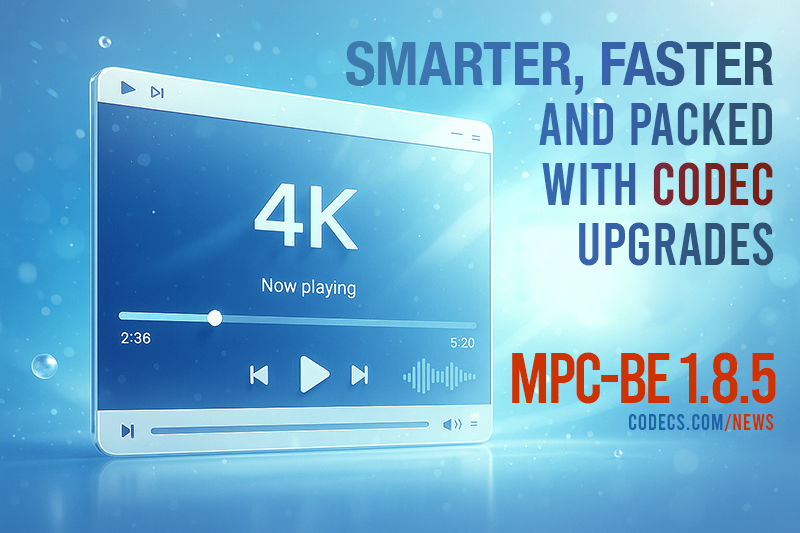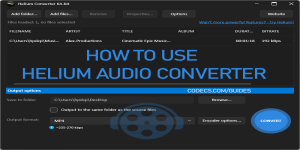The popular open-source media player MPC-BE (Media Player Classic - Black Edition) has received a significant update with the release of version 1.8.5, bringing support for modern video codecs, improved stability, and a host of new user interface features.
Expanded Codec Support
MPC-BE 1.8.5 improves playback compatibility for several video formats:
Avi Splitter now offers better handling of VP9 and AV1 video formats.
Matroska Splitter improves support for VP9 and Apple ProRes video, while also improving stability when working with unstable or corrupted sources.
Mpeg Splitter has gained AV1 video support, ensuring compatibility with newer content.
On the decoding side, MPC Video Decoder brings multiple performance and compatibility upgrades:
Improved decoding for VP9 video.
Hardware decoding for slightly non-standard AV1 streams is now supported.
Video frame copying in CopyBack modes has been optimized using techniques from the LAV Filters project, resulting in faster performance.
Audio Rendering and YouTube Integration
MPC Audio Renderer addresses crash issues in specific scenarios and includes enhancements to the Push method for smoother audio playback.
YouTube playback has also been refined:
The default format is now set to VP9 720p + Opus.
Fixes have been applied for merging VP9 and AAC streams using ffmpeg.exe.
Additional checks ensure the availability of URLs before playback.
yt-dlp support has been improved, and users can now set a preferred audio language.
Player Improvements and New Features
Several new options and interface tweaks make MPC-BE 1.8.5 more customizable and user-friendly:
Fixed an issue where video frames with subtitles weren't saved correctly when using the MPC Video Renderer.
HLS M3U files are now passed directly to the source filter, instead of being treated as standard playlists.
Users can now:
Save the “Show milliseconds” setting for better timestamp precision.
Adjust control sizes.
Enable the “Blur Behind” effect on Windows 10 and later.
Access a new OSD (On-Screen Display) settings panel.
Use a new Debanding shader to improve image quality.
Various interface fixes round out the release, addressing minor UI glitches and improving overall usability.











How to Download HEVC Video Extension for Free
actually worked, made my day better icl
Read More →Best Player for Subtitles (2025 Guide)
@P.A. Blok You're right, thanks for the feedback! We've updated the guide to clarify that VLC does auto-detect ...
Read More →How to Play HEVC Files in VLC Media Player (2...
@VanguardLH You're right, it'll be corrected. Thanks for pointing it out!
Read More →